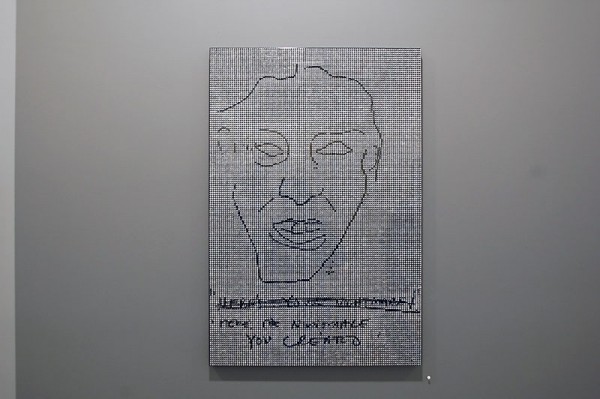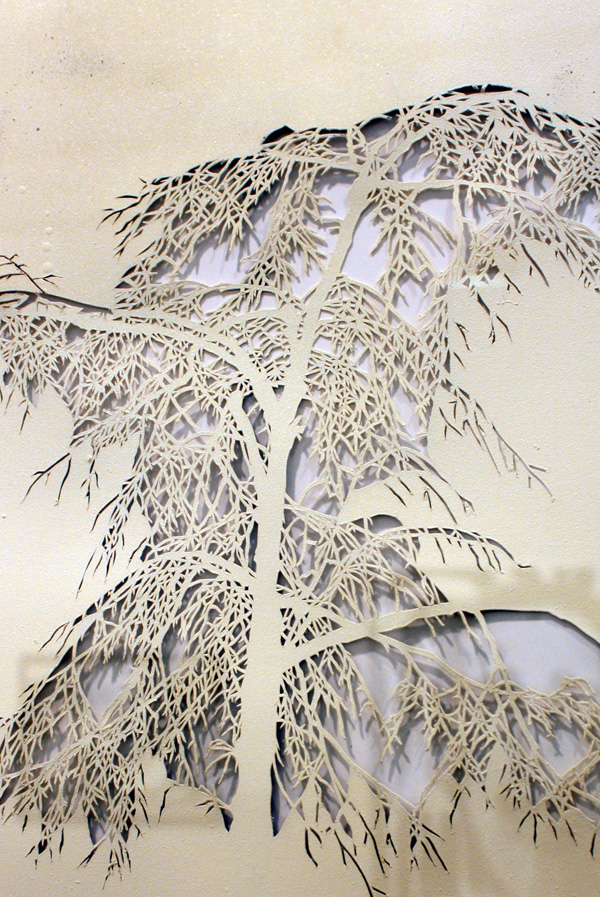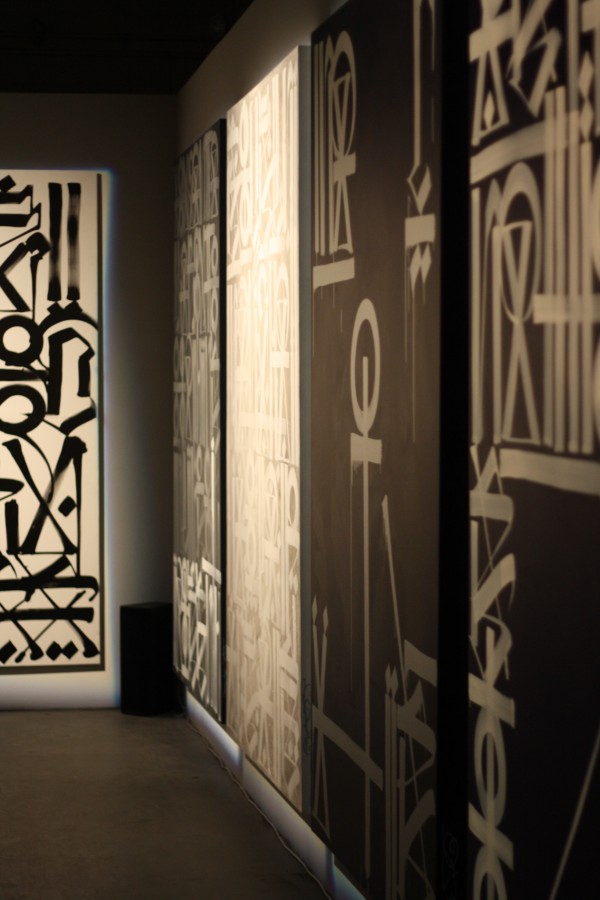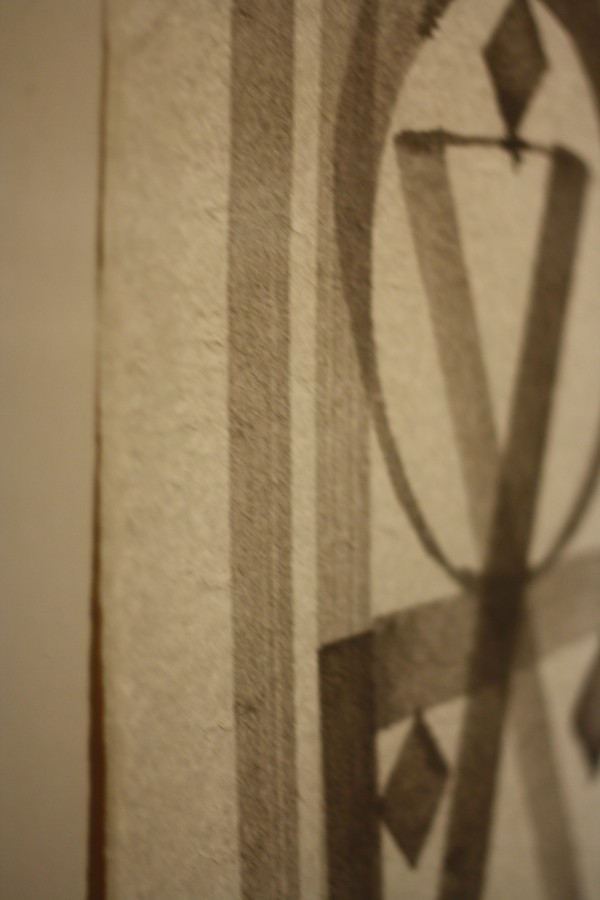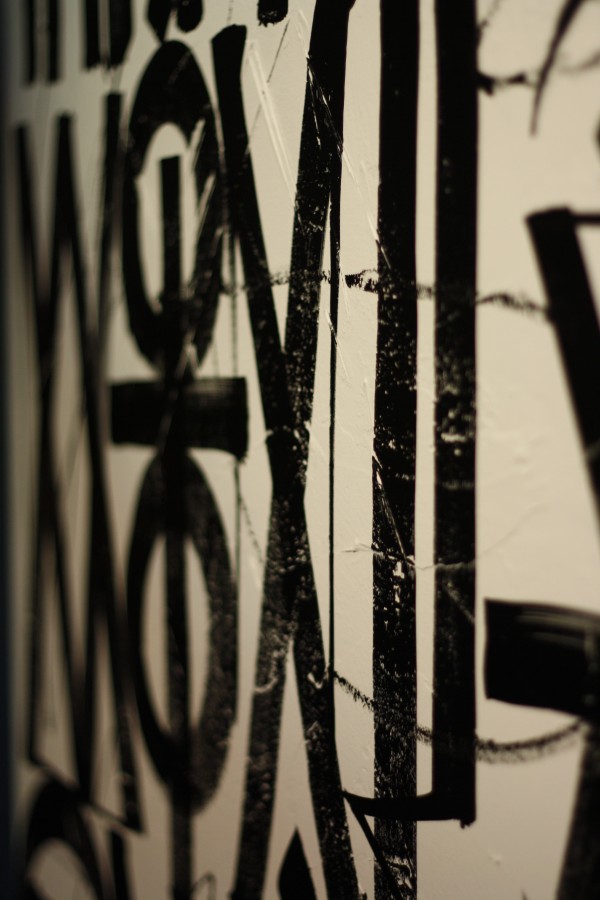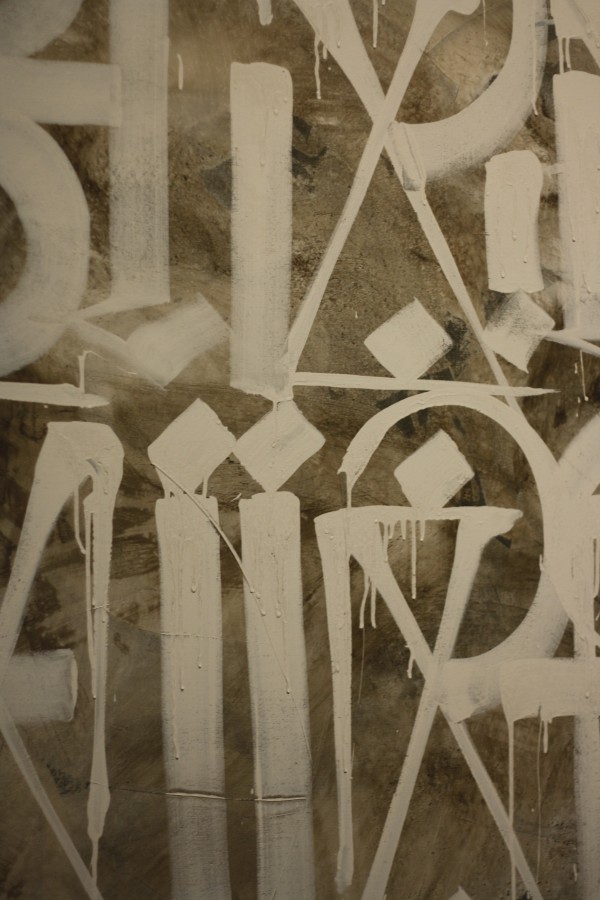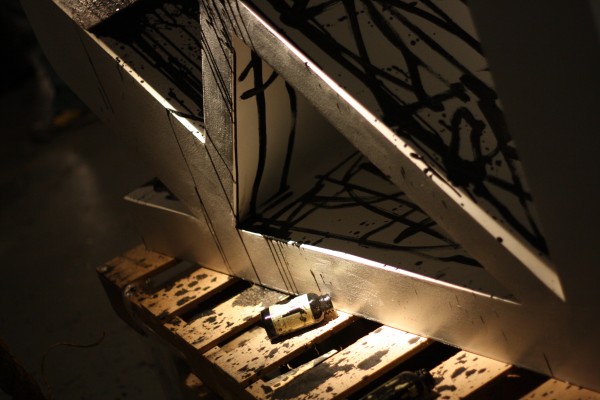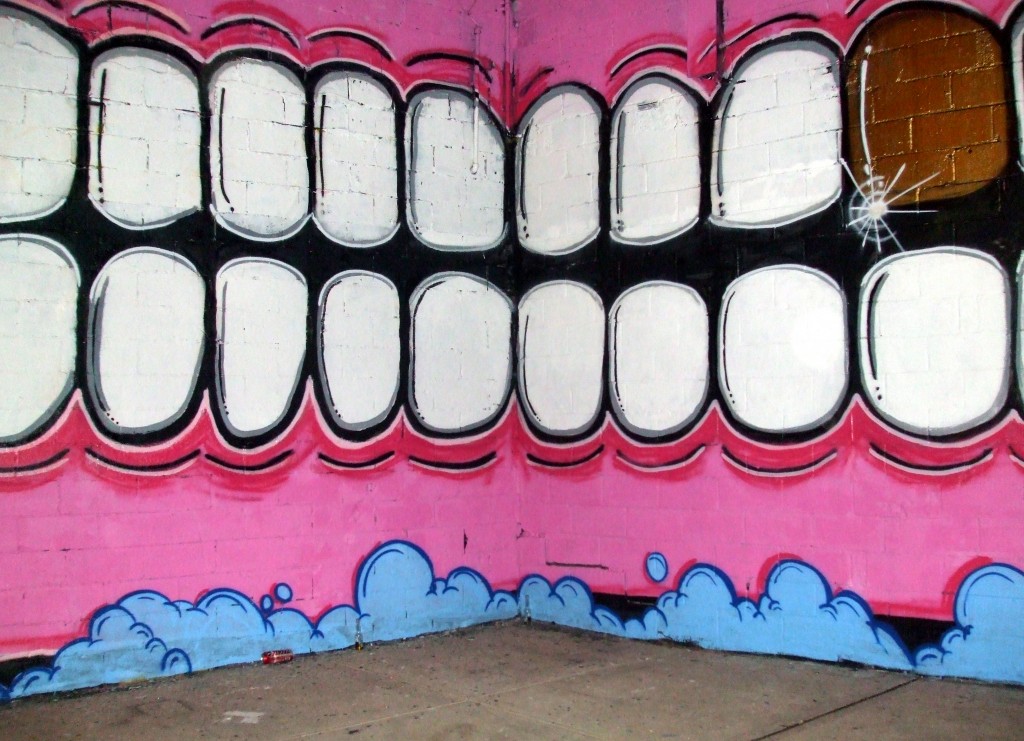
Last Friday I got to check out the opening of Sweet Toof’s new show, Dark Horse, at Factory Fresh in Bushwick. (Unfortunately, I didn’t arrive early enough to get one of the paper Sweet Toof smiles mounted on popsicle-sticks, which were given to the first visitors.) The gallery was transformed, inside and out, by large and small oil paintings, hanging woodcuts, and painted walls in the gallery’s courtyard.

Sweet Toof’s oil paintings were dramatic in a different way than his walls, like some strange version of the Old Masters, with bony horses and dogs and nobly-dressed skeletons all outfitted in his pearly whites. Some of his large rectangular canvases dominated the interior, but he also had smaller circular canvases grouped in series throughout the space. Skeletons did battle with paint rollers, in groups and one-on-one, sometimes in front of rural backgrounds, other times in some type of apocalyptic-type cityscape.
He played with using pseudo-gilded frames and sparkly paint backgrounds for smaller works, and I have to say, he may be the only artist I know of that can use glitter and horses in the same piece and still have it look amazing. More than that, though, his paintings were the type of thing you can look at for awhile and continue to see more in—aesthetically and art historically speaking, definitely, but also in the sense of morbid, symbolic hilarity.
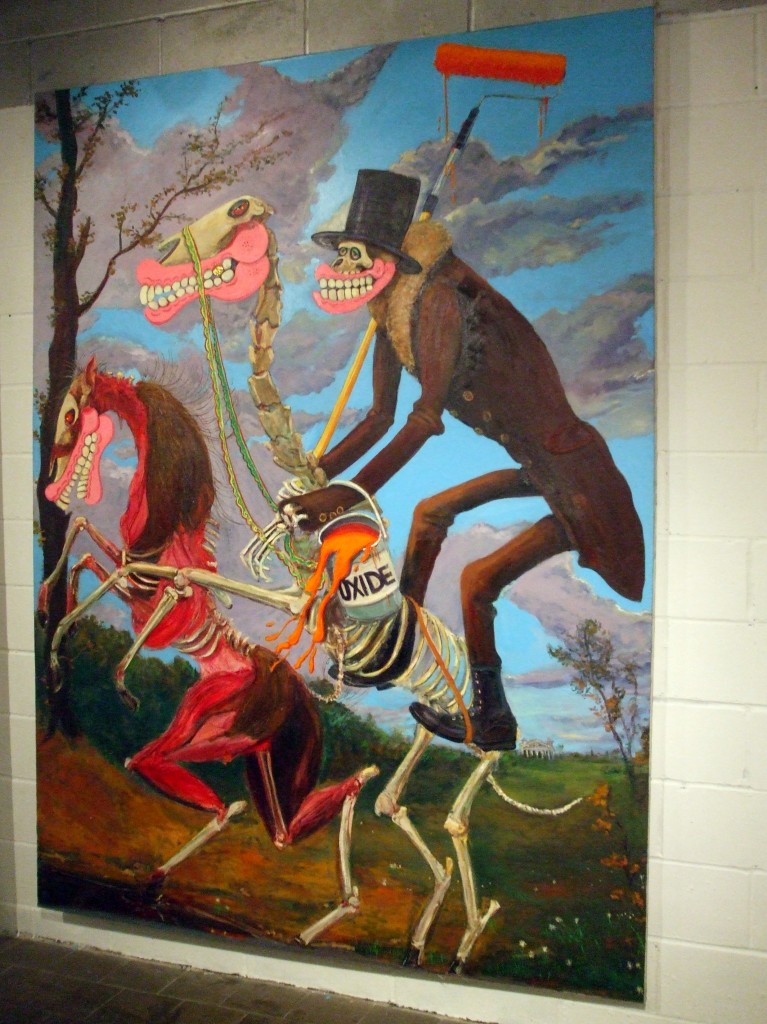
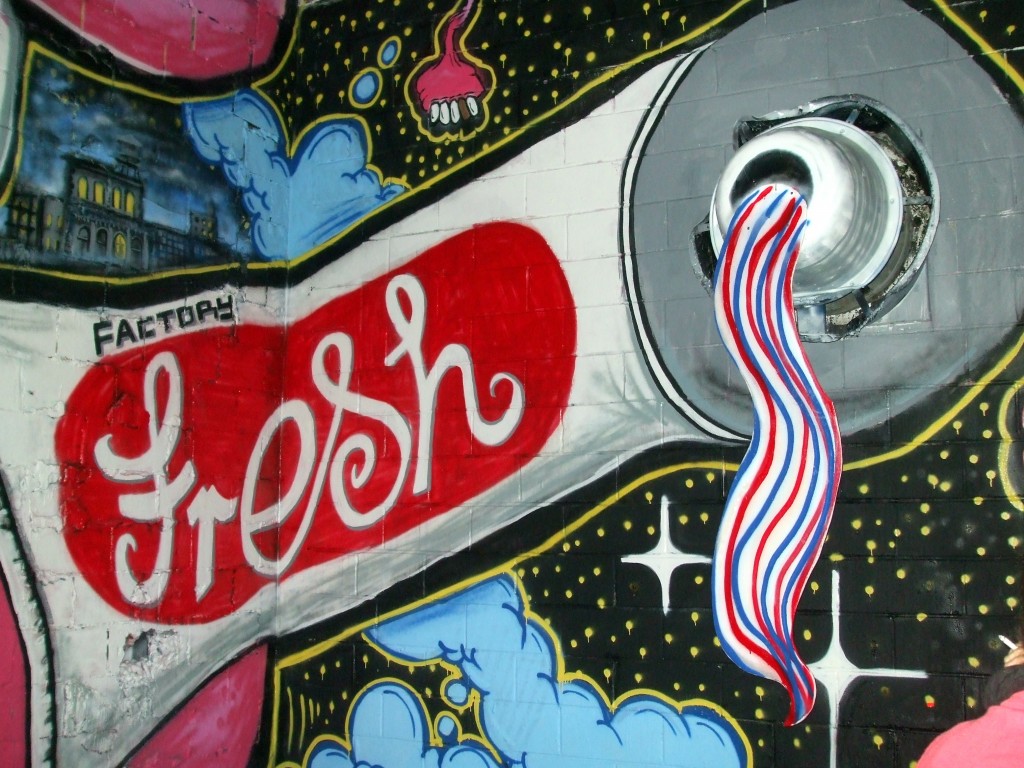
Factory Fresh even got its own tube of Toofpaste—(artists typically use up most of the wall space in the gallery’s courtyard, but it was the first time I had ever seen anyone incorporate the vent into a piece.) All in all, a great show, and one of my favorites that I’ve seen at the gallery. Dark Horse stays up until May 22nd, and is Sweet Toof’s first solo show stateside, so be sure to check it out.
Photos by Frances Corry




